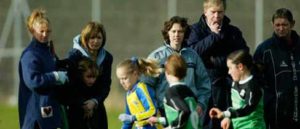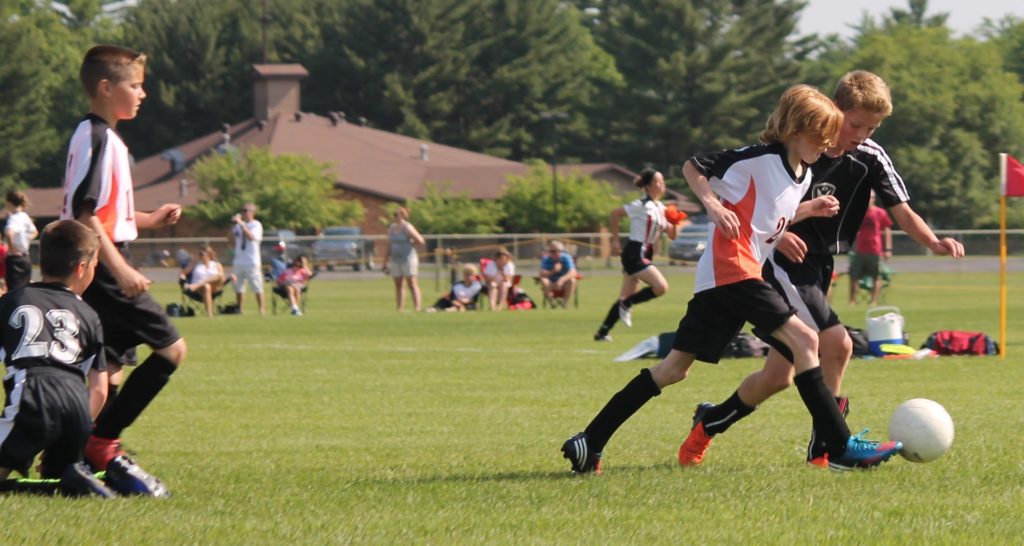The new season is upon us. The excitement, the energy, the (for some) sleepless nights are ramped up to 11! It is also a time to visualise just how much our players will develop over the coming year.
One of the great thing about Foundation Age players is that, if the right tools are in place, then their growth is astronomical. I think back to a former U8 Academy programme that I ran. The first set of games it was like herding cows. They were charging in one direction and all players were within 5 yards of the ball. By the end of the spring, both the boys and girls groups could shield the ball effectively, use 1 v 1 moves with confidence, finish first time and recognise when and where to perform an overlapping run.
Similarly, the NCUSA U12 girls that I coached. By the end of their U11 season, they were able to rotate positions vertically (centre back steps out of defence, the centre mid drops in to cover that space). By the end of their U12 autumn season, they could combine that with rotating laterally as well (striker moves wide into the channel, centre mid pushes forward, the winger slides inside). Comparing this to my work with U14's and above and these habits are so much easier to instill with foundation age players.
But how do we best make sure of this? The following 4 ideas have helped my players and I and continue to do so.
Set Targets on Game Days

Kids are competitive individuals. The first thing that most say when they come off the field is "we won 3-1" or "we lost 3-1". They are generally not concerned with performance, due to a number of reasons - parents, peer pressure, the Premier League - and as a result, this can cause some issues in encouraging players to follow your development ideas. For example, if a player lives in a home where parental attention is limited, yet the parent celebrates every goal they score like its the World Cup Final, chances are that player will play for themselves to score.
Adding targets in games can help players focus on playing the correct way. I attempted this with a team I was given who were placed in a few divisions too high. Our first game ended in a 10-0 defeat. The next game was 6-0 and this remained consistent for most of the season. Although I was able to distance myself from the result, at 10/11 years old, the players did not have the mental capacity to do so. My solution was to ask for the following in our 5th game
6 x successful 1v1 dribbles
3 x 3 passes or more
10 shots
2 goals
Simple but effective. Though we lost the game, they look on their faces was different when I told them how close they had got to their targets. This continued for the rest of the season. The more games that we played, the more they started to hit those targets and close the scores. Last game of the season came and we won 4-0, along with hitting every target that was set.
Make sure to keep a tally of every time one of your targets set is completed (or give your assistant this task). Inform the players of where they are at half time in terms of reaching the targets and try and keep them relevant to what you have worked on. For example, don't aim for 3 consecutive passes if all you have worked on is dribbling.
Check out these 6 additional ideas to accelerate your Game Day Coaching performance
Repeat, Repeat, Repeat

For years, I was a reactive coach. I would see a game, figured that the team struggled on finishing, then spend a session working on that. Next game, 5 goals scored, but also 5 conceded. So then I'd spend a session working on defending. Next game, 1 conceded, but none scored. This would continue to my bemusement, unable to grasp why nothing would stick. Having only spent an hour a time working on a topic, the answer should have been obvious.
Nowadays I stick to a topic for a set period of time. When I coached in the US, with seasons taking place over a period of 15 weeks, I would cover 3 topics for 5 weeks each. In the UK, where the season is a lot longer, I'll generally spend close to 8 weeks covering the same topic, added slightly more information every session to ensure that the players are sufficiently challenged.
Repeating the same point over and over may seem frustrating, but it is vital to encourage accelerated growth. Whenever I start with a new U8 group, my first session is the same - dribbling and shielding. Over the season we'll cover 1 v 1's, finishing and 2 v 1 combination play (this would be in the spring season if in the US). Despite the change in topics, the term "shielding" will be mentioned every session thereafter, without fail. By the end of 6 months the idea is so ingrained in them that I have confidence every player knows how to keep the ball if no obvious forward movement (pass or dribble) is available. 1 session would not be enough to cover this!
Be sure not to run the same activity week after week. Even the slightest variation to an activity will keep players engaged and offer them a new challenge. Using our ebooks as an example, all activities contain at least 2 variations so that players are constantly being encouraged to think differently.
Involve the Parents in your Plans

Parents want to be a part of their child’s development in ALL walks of life. You only have to see the excitement when a child takes their first step or says their first word. Photo albums upon photo albums of children doing the most random things are commonplace. It’s easy to empathise with parents wanting to feel that they had a role to play in their child’s growth into becoming an adult. This includes when they play sport.
Couple this with the fact that parents are paying THEIR money for their children to play football. Ultimately, they are paying customers and will feel a right to have their say. As with any customer, parents should be informed of everything before joining the team you coach.
I make a point of having a face to face meeting with the parents of every new team that I coach. This usually takes place after the first session. It allows me to tell them who I am, my coaching experience, my goals for the team and my expectations of the players and parents. I also inform them of what they can expect from me, so that I can be held accountable.
Taking the communication one step further, I make sure to e-mail parents after every game. This allows me to tell them what we did well, what we need to improve on and what the focus is on going forward. The meeting and e-mails achieve a number of things
It allows them to be fully aware of what to expect before making a commitment
It keeps their support on game days in tune with what I am after from the players
It hopefully puts their feedback away from the field in tune with what I would say
There will always be parents who will disagree or be awkward. I have found by taking these steps, it eliminates most from doing that.
7 tips for getting parents to work WITH you for the development of THEIR children
Time on Task

We all want our players to be better conditioned. We also know the best way to do this is with the ball. Fast paced, high intensity sessions are the order of the day, but are your players as active for as much of the session as you think?
Working for a coaching company in New Jersey a decade ago, I had to make sure that our players were active for 80% of a session. This left me with 18 minutes of a 90-minute session to fit in water breaks, activity descriptions, group coaching points and end of session feedback. It also meant that the players were active for 72 minutes of the practice. The difference in games was outrageous. My teams would often finish games battering the opposition goal. I lost count of the amount of times my U11 boys scored late winners or equalizers to the chagrin of the other team's coach.
Taking this idea into my next coaching role, where I was leading staff education and assessments, I used a stop watch to time when coaches asked their players to stand still or take a break. Most staff were shocked when they found out that their players were active for only 50 minutes of a 90-minute session. One coach managed to stop the players and talk for over 50% of the entire practice! To be fair to him, he didn’t argue the point and worked to improve that aspect of his coaching.
As a test, have someone time your session the next time you run one and see how long players are active for. If you can, go one step further and video yourself. Recognizing what you can eliminate and tweak will go a long way to keeping players active.
4 additional tweaks to improve your effectiveness as a Coach

